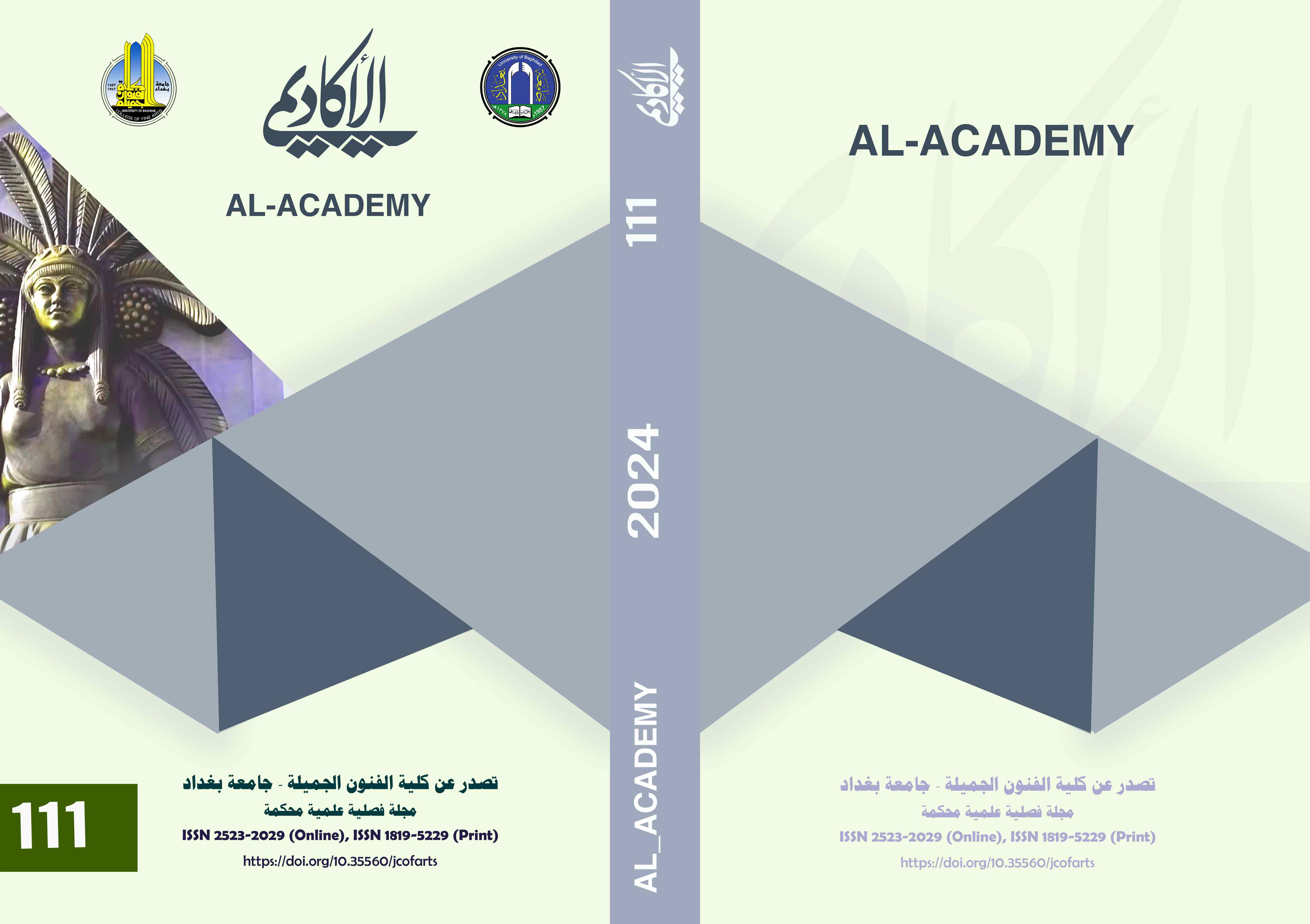Ceramic Artistic Employment in the Palace of the Sultans( Topkapi)
DOI:
https://doi.org/10.35560/jcofarts1243Keywords:
employment, art, ceramics, sultans' palaceAbstract
Turkey is one of the most important countries in the Islamic world, which is famous for its historical architecture, including the Topkapi Palace, where it occupied an important place in the history of the Ottoman era, leaving its mark with an ancient cultural heritage, reflecting in it architectural styles, in addition to the diversity of arts in general, such as glass, ivory, metal, wood, textiles, and ceramic artifacts in general. Special, where it enjoyed great prosperity, through which it revealed ceramic artistic productions that expressed a homogeneous vision due to the marriage between artistic and functional aesthetic performance ((Özlü, Nilay: From imperial palace to museum: The Topkapı Palace during the long Nineteenth Centurt, Turkey, 2018, pp) ), that the Topkapi Palace with its artistic ceramic productions of pots and tiles and the diversity of its decorative styles came as a result of the sultans’ love for art and their passion for collecting artifacts and beautifying their buildings, and this is what was studied in the current research (a study of ceramic artistic employment in the Sultans’ Topkapi palace as an example) through the study and analysis of some The selected ceramic art models in the palace. The study consisted of four chapters. The methodological and included framework dealt with the problem represented by the following questions: What is the mechanism of ceramic art recruitment in Topkapi Sultans Palace. The importance of the research, the aim of the research, and the limits of the research. The second section dealt with the artistic presentation of the holdings of the palace, while the third topic focused on the study of ceramics in Topkapi Palace. And the indicators of the theoretical framework, while the third chapter included research procedures, defining its community and its sample, and closing the research with a presentation of the results of the research and conclusions, and an index of sources and reference.
References
Akshit, I. (2020). Topkapi Palace. (M. Tan, Trans.) Turkey: Akshit Publishing House.
Ali Abdel Aal, D. (2019). Artistic Patterns of Ottoman Decoration. Egypt: Madarat Magazine, Issue 2.
al-Jamal, J. (B.T). Iznik Ceramic Decorations as an Introduction to Enriching the Designs of Women's Dresses. Damietta: Architecture and Arts Magazine.
Amer, M. (2012). Terminology in the Ottoman Empire. Syria: Damascus University, Historical Studies Journal, Issue 117.
Bek asaf, I. (2014). History of the Sultans of Bani Othman. Egypt: Hindawi Foundation.
COŞKUN, B. (2018). Scraping the layers: Tahsin Öz and her stylistic restorations in Topkapı Palace Museum. Turkey: B.N.
DIKER, A. (1915). An Updated Exhibition Venue in the Topkapı Palace Museum. B.M: B.N.
Dimas , A. (2015). Articles on Translation and Communication in Museums. UAE: Sharjah Museums Authority.
El Abidine, M. (2017). Museum Employment of Archaeological Buildings, Topkapi Palace as a Model, Al Benaa Magazine. Retrieved from https://www.academia.edu/7956958/.
ERLER, Z. (2020). Ayasofya ve Topkapı Sarayı Müzesi Bilişsel ve Duygusal. Turkey: Müze Alanya Academic Review Journal Yıl, Vol:4, No:3.
Gharib, Y. (2020). The Ottoman Miniatures. Istanbul: The New Arab Magazine, Issue 2312.
Ghizlan, D. (2016). Painting in Persian and Ottoman Miniatures in the Sixteenth Century AD. Damascus: Damascus University, Master Thesis.
Hadi, B. (1990). A History of Arab Islamic Art. Baghdad: Dar Al-Hikma Press.
Hasnain, a.-S. (2022). The ceramic tiles in the mihrab of the Kashif Mosque in Assiut. Cairo: Heritage and Design Magazine, Issue 9.
Hisham, S. (2008). Mosul's Civilizational Contributions to Islamic Architecture during the Ottoman Era. Baghdad: Journal of Education and Science, Issue 3.
İlgaz, N. (2015). yüzyıl çini pano tasarımlar. İstanbul: Marmara.
Mahmoud, b. (B.T). Symbolic Elements in the Decorations of Industrial Butchery Facilities and Tools in the Ottoman Era. Algeria: Studies in the Antiquities of the Arab World.
Munsterberg, H. (1998). World Ceramics From Prehistoric to Modern Times. B.M: B,N.
Nahas, R. (2016). The Aesthetic Values of the Blue Color Prevailing on Ottoman Ceramic Artifacts. Sultanate of Oman: Journal of Arts and Social Sciences, Sultan Qaboos University Publications.
Namik, ,. H. (2010). Architectural Ornaments in the Ottoman Palaces in the Old City of Nablus. Palestine: An-Najah University, Architectural Engineering, Master Thesis.
Namik, H. (2010). Architectural Ornaments in the Ottoman Palaces in the Old City of Nablus. Palestine: An-Najah University, Architectural Engineering, Master Thesis.
Necipoğlu, G. (1991). Architecture, Ceremonial, and Power: The Topkapi Palace in the Fifteenth and Sixteenth Centuri. New York: The Architectural History Foundation.
Özlü, N. (2018). From imperial palace to museum: The Topkapı Palace during the long Nineteenth Century. Turkey: B.N.
Qadouri, A. (1986). The Museum of Jewelry. Egypt: Alam al-Athar Magazine, Egyptian Antiquities Authority, Issue 30.
Tezcan, S. (2020). Topkapı Sarayı Oğuznamesi. Turkey: Dede Korkut Oguznames.
Tully, A. (2010). Eighteenth-Century Ottoman Princesses at Topkapi Palace. Turkey: B.D.
Uğur, T. (1988). Anadolu-Türk Saray Mimarlığının Evrimi Üzeri Gözlemler (12.-16. Yüzyıl). Turkish: Topkapı Müzesi.
Wagdy, I. (2018). A study of a group of Ottoman marble endowments at the Topkapi Museum. Egypt: Journal of the General Union of Arab Archaeologists, Issue: 19.
Downloads
Published
Issue
Section
License
Copyright (c) 2024 Shaima Ali Fleih Mazban Al-Shammari

This work is licensed under a Creative Commons Attribution 4.0 International License.













